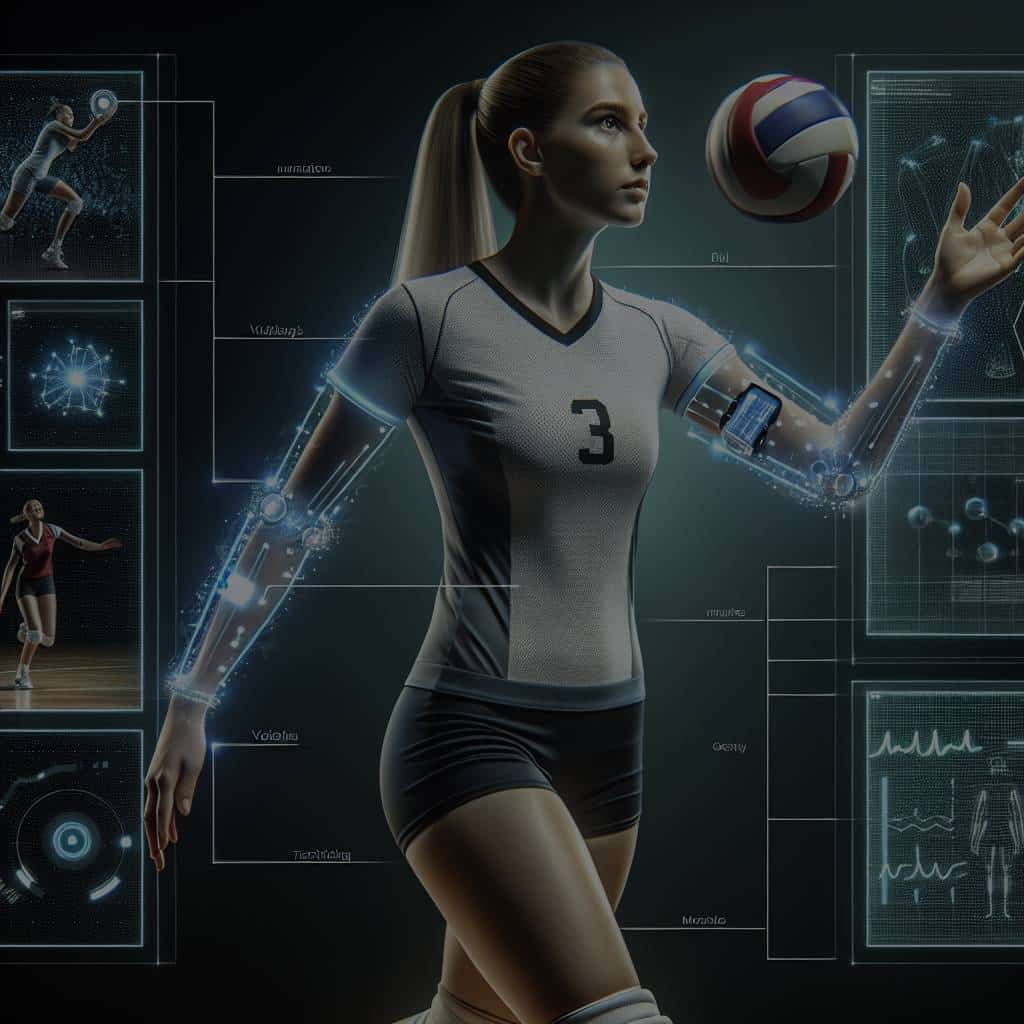What’s the Latest in Smart Clothing Technology for Monitoring Athlete Performance in Volleyball?

The advancements in technology have remarkably revolutionized the field of sports science. The emergence of wearable tech has taken athletic performance monitoring to new heights. Especially in the realm of volleyball, the use of smart clothing and related technologies is becoming a key factor in assessing players’ abilities, refining training techniques, and minimizing the risk of injuries.
1. The Rise of Wearable Technologies in Sports
The incorporation of wearable data devices in sports is a game-changer. As the digital age progresses, athletes and coaches are constantly on the lookout for innovative ways to enhance their performance, and wearable tech has been a significant driving force in this context.
A voir aussi : How Can Customized Mouthguards Improve Protection for Rugby Players?
Wearable technology refers to smart devices that athletes can wear on their body during training or matches. These devices are embedded with a plethora of sensors that collect a vast array of data, providing valuable insights into the athlete’s condition and performance during the game. The data collected from these wearables is then analyzed for a comprehensive understanding of the athlete’s physical state and performance.
For volleyball players, this technology’s relevance has become increasingly apparent. It provides a more detailed and accurate analysis of the players’ performance, making it easier for coaches and trainers to design effective training regimes.
A voir aussi : How Can Youth Soccer Coaches Implement Cognitive Training Drills?
2. Smart Clothing: The Next Big Thing in Sports Tech
In the world of wearable tech, a new trend is rapidly gaining popularity — the use of smart clothing. Unlike conventional wearable devices like wristbands or watches, smart clothing is a more sophisticated and seamless approach to monitoring athletic performance.
Smart clothing includes wearable garments like shirts, shorts, and socks embedded with tiny sensors. These sensors collect real-time data about the body’s physiological metrics like heart rate, muscle engagement, body temperature, sweat levels, and more. This data can then be synced to a smartphone or computer for further analysis.
For volleyball athletes, smart clothing provides a more comprehensive picture of their performance. The embedded sensors can monitor and analyze various aspects of their gameplay, like jump height, running speed, arm swing velocity, and more. This detailed data analysis helps athletes and coaches identify areas of strength and those requiring improvement.
3. How Smart Clothing Enhances Training in Volleyball
The integration of smart clothing technology in volleyball training has proven to be a boon for athletes and trainers alike. The real-time data analysis provided by these wearable devices enables a more detailed and in-depth understanding of the athlete’s performance.
One of the most significant benefits of smart clothing is its ability to monitor the athlete’s body in real-time. The sensors embedded in the clothing monitor every movement of the athlete, providing real-time feedback on their performance. This allows the trainer to adjust the training in real-time, ensuring that the athlete is performing at their best.
Moreover, smart clothing also helps in injury prevention. The sensors can detect any abnormality in the athlete’s movements, indicating the potential risk of injury. This enables quick intervention and correction, reducing the risk of injuries during training and matches.
4. Current Trends and Developments in Smart Clothing for Volleyball
In recent years, several advancements have been made in smart clothing technology for volleyball. Companies and researchers are continuously developing new ways to make this technology more efficient, user-friendly, and effective in monitoring and enhancing athletic performance.
One of the key developments in this area is the use of bio-signal monitoring. These sensors can monitor the athlete’s physiological signals like heart rate, body temperature, and sweat levels, giving insights into their body condition during a match or training session.
Another significant advancement is the development of motion sensors that monitor the athlete’s movement patterns, including speed, acceleration, and force. This technology can give a detailed analysis of the athlete’s technique, helping to improve their gameplay and reduce the risk of injuries.
5. The Future of Smart Clothing in Volleyball
The future of smart clothing in volleyball looks promising. As technology continues to advance, the potential of wearable devices to enhance athletic performance and prevent injuries is vast.
In the near future, we can expect to see more advanced and sophisticated wearable tech being integrated into volleyball. These advancements would not only provide more detailed and accurate data analysis but also make the technology more accessible and user-friendly for athletes and trainers.
The integration of artificial intelligence (AI) in wearable tech is also a promising trend. AI can process and analyze the vast amount of data collected by wearable devices more rapidly and accurately, providing more detailed insights into the athlete’s performance.
In conclusion, the use of smart clothing and wearable tech in volleyball is a revolutionary trend that is set to transform the way the sport is played and trained. As technology continues to advance, the potential of these devices to enhance athletic performance and prevent injuries is vast, making it a must-have for every volleyball athlete and coach.
6. Comprehensive Analysis of Volleyball Performance through Machine Learning
Utilizing machine learning in smart clothing technology has been a significant stride in understanding volleyball performance. Machine learning, a subset of artificial intelligence, involves computers learning from data without being explicitly programmed, which has been revolutionary in processing the vast amount of data collected by wearable sensors in real time.
In the context of volleyball, the complex sets of data about heart rate, body temperature, sweat levels, muscle engagement, and movement patterns collected by wearable devices in smart clothing are analyzed through machine learning algorithms. These algorithms identify patterns and trends in the data, providing an insightful analysis of the athlete’s physiological parameters and performance.
This analysis allows for strategic decision making in tailoring training regimens and gameplay strategies. For instance, noticing a pattern of high heart rates correlating with a decrease in jump height could indicate overexertion, leading to necessary adjustment in training intensity. Similarly, understanding an athlete’s peak performance times based on physiological parameters could guide scheduling of training sessions and matches for optimum results.
Scientific studies on this topic can be found on Google Scholar and are open for reading in a separate window. These studies validate the effectiveness and efficiency of machine learning in analyzing performance data from smart clothing, thereby establishing it as a gold standard in sports tech.
7. Conclusion: The Impact and Future Prospects of Smart Clothing in Volleyball
In conclusion, the advent of smart clothing has indubitably revolutionized volleyball, catapulting it into the digital age. The integration of wearable technology and sensors into the fabric of an athlete’s clothing has provided a wealth of invaluable data about the human body’s performance during training and matches, in real time.
The collected data, rich in physiological parameters and movement patterns, has paved the way for advanced analysis through machine learning. This has been a game-changer in understanding the intricate mechanisms of the athlete’s body during a volleyball game, informing strategic decision making in training and gameplay.
Looking to the future, we anticipate seeing even more advancements in this booming field. The potential for wearable devices to integrate more seamlessly with the athlete’s clothing and body, to collect even more detailed data, and to provide more sophisticated and accurate analysis through artificial intelligence is immense.
As we move forward, it’s clear that the role of wearables in sports, particularly in volleyball, will only continue to grow. Using these tools, athletes, coaches, and trainers can make informed decisions to enhance athletic performance, reduce the risk of injuries, and elevate the sport of volleyball to new heights.
Indeed, with the rise of smart clothing, we are witnessing a paradigm shift in sports technology. The future of volleyball looks brighter and smarter than ever, thanks to the transformative power of wearable tech and smart clothing.
